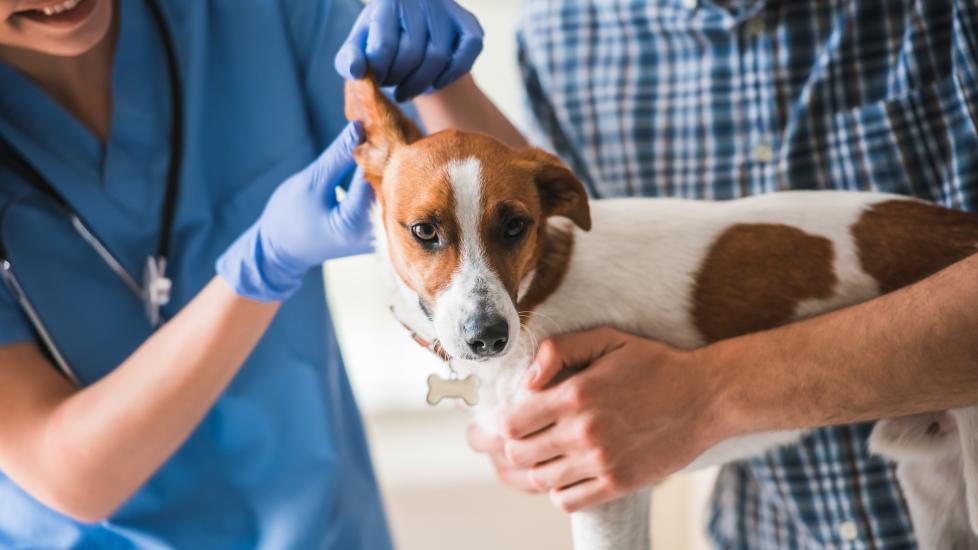Understanding and Managing Hyperpigmentation in Canine Companions
In the world of our furry friends, just as with humans, skin pigment can sometimes take on a life of its own. Hyperpigmentation, or increased melanin production, is a common occurrence that affects dogs of all breeds and ages. While it may be nothing more than an aesthetic change for some pups, it can also signal underlying health issues or discomfort for others. As pet parents, understanding this condition and how to manage it is crucial to keeping our four-legged family members healthy and happy.
The Nature of Doggie Dermal Pigmentation
Pigmentation in dogs serves various purposes: protection from UV rays, camouflage, and even signaling reproductive status. Melanocytes are cells responsible for producing melanin—the substance that gives color to hair, eyes, and skin. When these cells become overactive, hyperpigmentation occurs, resulting in darker patches, freckles, or overall darkening of the coat. This process is natural and normal for many dog breeds but can occasionally indicate something amiss within your pup’s body chemistry.
Causes and Concerns
While genetics play a significant role in determining a dog’s base coat color and pattern, there are several factors that can trigger hyperpigmentation:
- Hormonal Imbalances: Puberty, pregnancy, or spaying/neutering procedures can lead to hormonal fluctuations that affect melanocyte activity.
- Sun Exposure: Prolonged exposure to ultraviolet light can cause dark spots similar to those seen in human sunspots.
- Injury or Trauma: Scars and healing wounds often result in localized areas of hyperpigmentation due to inflammation and cell regeneration processes.
- Certain Medications: Some drugs used to treat allergies or other conditions can inadvertently induce changes in skin tone.
- Metabolic Disorders: Health problems such as Cushing’s disease or Addison’s disease can disrupt hormone levels leading to irregular pigmentation.
- Immune System Issues: Autoimmune diseases like vitiligo (where parts of the coat lose color) can have opposite effects, causing hypopigmentation or hyperpigmentation.
It’s important to note that not all instances of hyperpigmentation require medical intervention; however, if you notice any sudden or extreme changes in your dog’s coloring accompanied by behavioral changes or signs of distress, consult with your veterinarian immediately. Early detection and treatment could prevent further complications down the line.
Management Methods
If hyperpigmentation does not pose a threat to your dog’s well-being, management strategies might focus on cosmetic considerations rather than medical ones:
1. Regular Grooming:
Frequent brushing helps distribute natural oils throughout the coat which can help maintain uniformity in fur texture and sheen across lighter and darker areas.
2. Protection from the Sun:
Darker patches may be more susceptible to sunburn – use protective clothing or apply pet-safe sunscreen when taking your pooch out into direct sunlight during peak hours.
3. Dietary Adjustments:
Some owners report success with antioxidant supplements containing ingredients like vitamins E & C, lutein, lycopene, and selenium which support skin health and reduce oxidative stress associated with aging or environmental damage. Always check with your vet before starting new supplement regimens though!
4. Environmental Control:
Keeping indoor lighting consistent without harsh fluorescent lights that can exacerbate differences between light and dark hairs is one way to minimize visual contrast caused by uneven pigmentation.
5. Stress Reduction:
Providing plenty of mental stimulation through toys, exercise routines, and socialization opportunities can help keep pets calm and relaxed which reduces stress hormones known to influence skin health indirectly via immune function modulation mechanisms among other pathways too complex for most laypeople including myself who write about them here briefly!
Remember that every dog is unique, so what works best will depend upon individual circumstances including breed type(s) involved since different types tend towards certain patterns anyway regardless whatever else going on internally affecting externally visible aspects only after passing through layers biological complexity first before reaching surface level manifestations we observe everyday living alongside beloved companions each day brings us together closer bonds formed over time shared experiences good bad everything between along journey together lifetime commitment requires patience understanding unconditional love reciprocated equally both ways mutually beneficial relationships flourish mutual respect boundaries honored everyone wins everybody happy endings guaranteed unless otherwise specified exceptions always exist reality remains unpredictable despite efforts predictability ensure safety comfort enjoyment coexistence highest priority values held sacred honorably upheld responsibly taken care considered thoughtfully acted upon wisely guided intuition empathy compassion kindness generosity spirit flows freely hearts open wide accepting embrace diversity beauty found everywhere surrounding us waiting discovered moments quiet reflection appreciation gratitude expressed openly honestly sincerely heartfelt feelings conveyed directly effectively powerfully moving words written eloquently crafted artfully composed sentences paragraphs pages filled wisdom knowledge experience gained lived learned taught passed forward future generations benefit collective memory preserved legacy left behind continues live forevermore long after gone remembered fondly cherished dearly missed deeply loved eternally.
